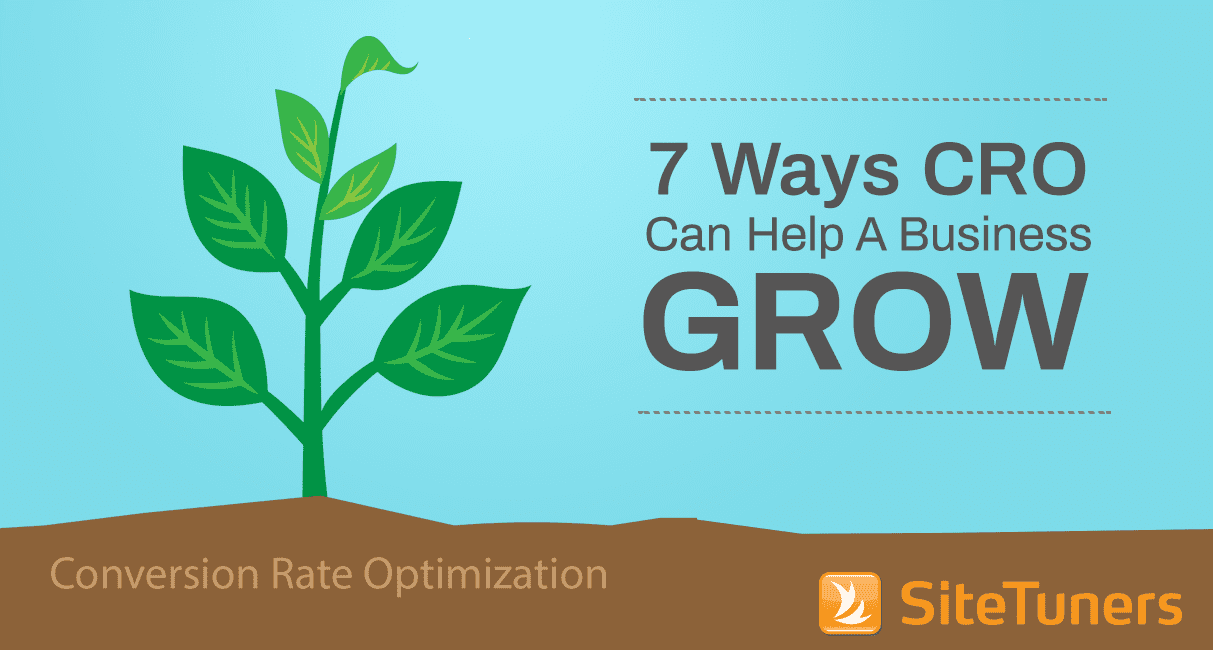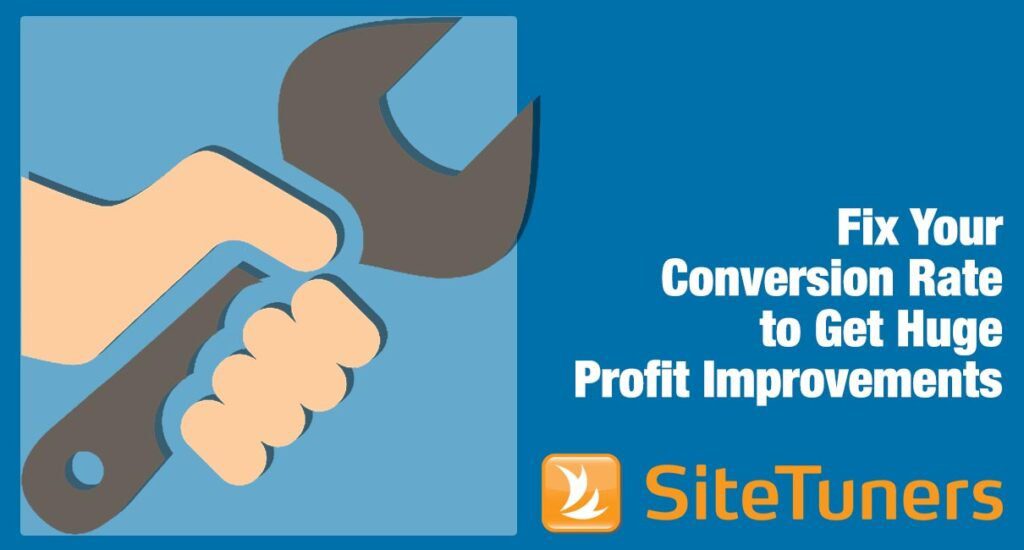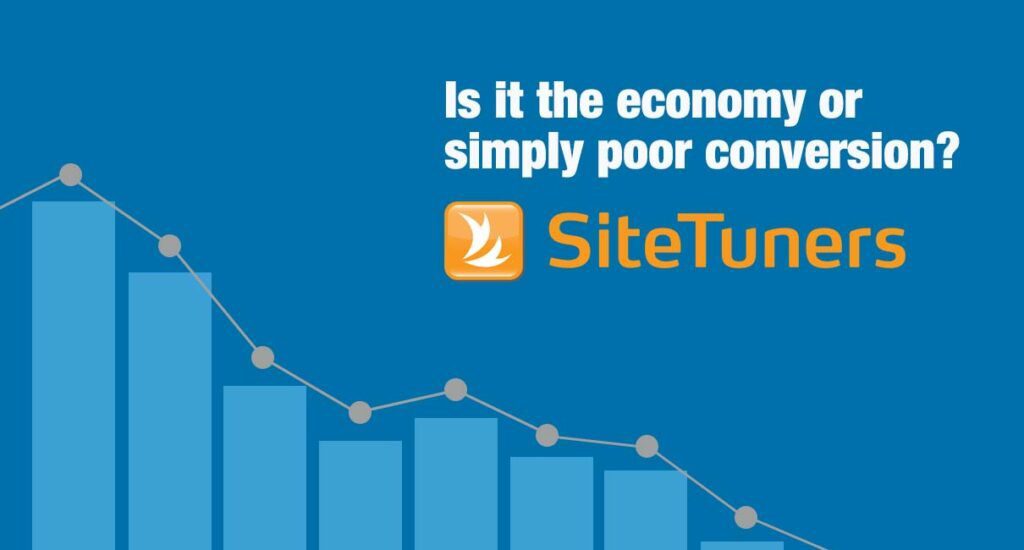
This is a shame, as based on Sean’s experience with companies like Dropbox, Eventbrite, and LogMeIn, CRO is the most powerful input in driving growth.
In a webinar, Sean shared how you can make a case for CRO in your business, as getting organizational support around CRO is crucial.
He presented 7 ways CRO can help a business grow.
1. CRO Harvests/ Enhances Desire (Intent)
• Increase conversion momentum. Think about how you can drive the desire – that leads customers toward a conversion event.
• Harness intent. Intent is one of the most powerful forces that marketers have to work with. Google, for example, is all about understanding and delivering people’s intent around the web.
Anybody who visits your web site has intent – there’s a reason they’re there. If you tap into that reason and understand the intent, you can capitalize on it and position your product against that intent.
• Take the slack out of the market. To convert as much of the intent that’s out there, you have to understand the intent and increase the desire in the process.
You can present questions to customers to understand their intent:
Page level intent: “Does this page make you want to [sign up] [for this product]?”
Overall visit level intent: “What are you hoping [this product] can do for you?”
After someone converts, you can ask them why they originally signed up for the product.
As you collect information from these questions, you can start to make adjustments to your communication plan.
2. CRO Reduces Frustration/ Friction
Sean defines CRO as desire minus friction. That is, conversion rate is a function of how much people want your product, and how much friction they face when trying to get the product. This means that if desire is high, people will be willing to deal with some friction. However, if desire is low, people will not complete the conversion process if they face any friction.
The key, then, is increasing desire and decreasing friction.
Reducing friction also creates a lot of goodwill toward your company, which is important in long term positioning.
Here are other reasons you should reduce friction in your conversion process:
• Scaling frustration is dangerous. If you try to grow your business while you have some real friction, you’re going to frustrate a lot of people, and it will be difficult to grow your business in the long run.
• Rarely do you get a 2nd chance with the frustrated. Uncover the friction that people have as they come into your site by asking questions like …
… Do you have any questions before [signing up, checking out, or purchasing]? (This can tell you the things that you’re not answering effectively on your website)
… Is there anything preventing you from signing up?
When you tie the answers you get from these questions into analytics or any other data that you have, you will get insights into why you’re losing conversions- it might be that one of your browsers is causing issues in the checkout, or that you’re not addressing one of your customers’ key concerns.
3. CRO Adds Business Momentum
As you increase desire and reduce friction, you start to build traction.
• Early CRO wins build momentum. CRO is one of the least expensive ways to grow a business. It helps you get more value out of every dollar spent and increases your ability to cost-effectively spend dollars. Momentum also has that secondary benefit – it is important for attracting additional capital.
• Data-driven improvement is infectious. Every time you make an improvement with CRO, the rest of your organization learns that data and testing lead to improvements. This results to fewer debates and less random work. CRO improvements also lead you to examine, at the product level, the necessity of certain features.
4. CRO Increases the Number of Viable Campaigns
Sean shares that with LogMeIn, they did not try to scale the business while there was friction in the conversion process. Instead, they spent four months focusing on running tests that mattered and improving conversion rate at every point from the initial visit to the web site through to a successful remote access.
They put resources into improving conversion rates, and then went back and tried to scale growth. They tested a lot of the different channels that previously had not worked, and those channels suddenly became effective.
Before optimization, for every dollar that they invested in a channel, they would get about 90 cents back. After optimization, they saw a 1000 percent increase from a visit to a successful remote control session which correlated directly to the percentage of people that purchased. For every dollar on that same campaign, they were getting 9 dollars back.
From this experience, Sean learned that:
• Conversion improvement increases successful campaign tests. It’s not just about improving the performance of a single campaign, it’s opening up campaigns that didn’t work at all in the past. This also helps you build more momentum.
• 10X improvement in conversion = 100X increase in growth.
• You should repeat ad tests after CRO wins. If you do a lot of campaign testing and certain campaigns don’t make the cut, go back and test things that previously didn’t work after you’ve had some big wins in CRO because there’s a good chance that those things are now going to be very viable. There’s also a good chance that your competitors haven’t gotten efficient enough to make that channel work for them, and that can be the advantage that makes you pull ahead in the market.
5. CRO Helps Customer Retention
• If visitor reaches MHX (must have experience), then you have a high retention rate. For start-ups, it’s important to identify your “must-have” score or the percentage of people who say they’d be very disappointed if they could no longer use your product. Look for the experience that people need to have with the product before they consider it a “must-have.” Once they reach that experience, they’re very likely to stick to the product a long time.
• CRO is about maximizing the percentage of people that reach the MHX.
• Understand your MHX to create accurate promise (expectations). A very important part of growth is retaining the people who come in the first place. CRO is about getting people to that must-have experience, and in order to do that, you need to understand what your must-have experience is, then build and start testing an effective promise that represents that MHX. If your promise is not aligned to what your product is actually effective at doing, you’re going to create false expectations and frustrate people with the inability of the product to deliver on that promise.
A lot of times, it’s a matter of running filters and figuring out which are the right customers who really need that experience. Getting the right people to the right experience is huge for being able to grow your business.
6. CRO Improves Word of Mouth (WOM)
• Word of mouth is by far the most powerful growth driver. If you took all businesses and all value that’s created in customer acquisition, WOM would dominate. In most of the fastest growing businesses that Sean has worked on or studied, WOM is the dominant channel that drives growth.
• More MHX = more WOM. Word of mouth is a function of getting people to a fantastic experience with your product. Every time someone reaches the must have experience, WOM increases.
• Some products lead to better WOM than others. For example, if you’re selling adult diapers, you may be delivering a MHX for the user, but they might be embarrassed about telling everyone what a great product it is. There are a lot of products that people consider a must have but are not necessarily proud to spread the word about.
• Optimize referral program flows. Test different prompts to get people to participate in your referral program – test different invitations and messages that you’re sending out through different channels.
One tactic that you can try is the the double-sided incentive where you give existing customers an incentive to spread the word. Dropbox, for instance, implemented a program where if a customer recommended Dropbox to somebody else, they got 250 megabytes of space and their friend got an additional 250 megabytes of free space as well.
Sean notes that in the case of Dropbox, the really important part was that before they introduced an incentivized referral program, they had an amazing authentic word of mouth from people being thrilled with the experience of using the product. So, the referral program acted as an accelerant on top of something that’s working. If you have very low word of mouth, then you won’t benefit from building an incentivized WOM on top of it.
7. CRO and Growth Double Down on Success
When you run a test and you get an improvement, that’s the best signal of where you’re likely to get an improvement again.
• When you can improve something, there’s a good chance you can do it again. Constantly figure out where those signals of success are, and put more wood behind those areas of success.
• When you can’t improve, move on to something else. If you’re running a test, and you’re not seeing any movement in a different area, there’s a good chance that that area was fairly well-optimized to start with.
If you can’t get Google AdWords to work for you, spending more time on Google AdWords might not be the right answer. You might find out that you have a relatively new product where there’s just not a lot of related search for what you’re offering and that you’ve got to go out and build demand rather than just harvest demand.
• Double down on your best pages, sources, and user segments that are most likely to convert. Build the momentum behind things that are working, and don’t get caught up in the areas where you can’t move the needle very well.
Sean stresses that CRO is a continuous improvement process, and the easiest thing to improve is something that’s broken. You often don’t know what’s broken and what isn’t until you try to fix it, and when something is fixable, it’s probably fixable even better, so it’s a matter of being dynamic and going after the lowest hanging fruit for areas to improve.
Watch the entire “7 Ways to Make CRO a Growth Driver for Your Business” webinar where Sean and SiteTuners CEO Tim Ash also talk about how net promoter score and personalization contribute to business growth.



